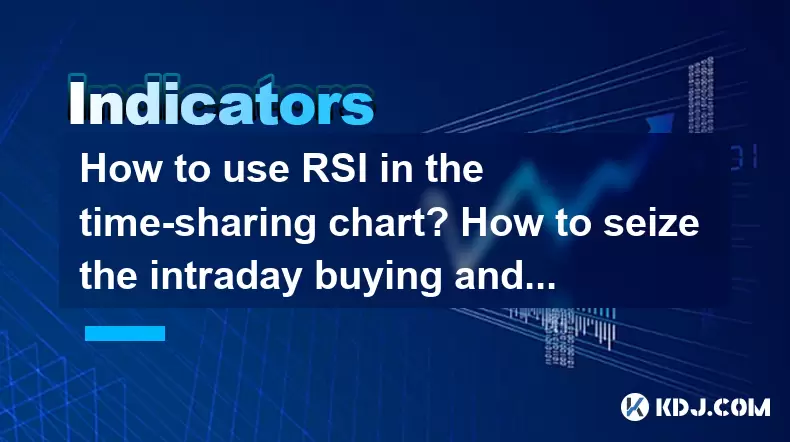-
 Bitcoin
Bitcoin $119900
0.91% -
 Ethereum
Ethereum $4576
8.55% -
 XRP
XRP $3.264
4.05% -
 Tether USDt
Tether USDt $0.9998
-0.05% -
 BNB
BNB $834.7
4.17% -
 Solana
Solana $191.8
9.96% -
 USDC
USDC $0.9998
-0.02% -
 Dogecoin
Dogecoin $0.2363
6.08% -
 TRON
TRON $0.3525
2.56% -
 Cardano
Cardano $0.8419
9.12% -
 Chainlink
Chainlink $23.19
9.97% -
 Hyperliquid
Hyperliquid $44.97
4.53% -
 Stellar
Stellar $0.4489
4.20% -
 Sui
Sui $3.876
6.19% -
 Bitcoin Cash
Bitcoin Cash $618.1
7.14% -
 Hedera
Hedera $0.2617
6.55% -
 Ethena USDe
Ethena USDe $1.000
-0.03% -
 Avalanche
Avalanche $24.61
7.96% -
 Litecoin
Litecoin $131.7
9.52% -
 Toncoin
Toncoin $3.502
3.62% -
 UNUS SED LEO
UNUS SED LEO $9.093
1.32% -
 Shiba Inu
Shiba Inu $0.00001358
5.37% -
 Uniswap
Uniswap $11.50
5.05% -
 Polkadot
Polkadot $4.150
7.77% -
 Dai
Dai $0.9997
-0.05% -
 Cronos
Cronos $0.1650
-0.75% -
 Ethena
Ethena $0.7981
2.06% -
 Pepe
Pepe $0.00001216
8.64% -
 Bitget Token
Bitget Token $4.467
1.74% -
 Aave
Aave $319.2
9.18%
How to use RSI in the time-sharing chart? How to seize the intraday buying and selling points?
Use RSI on time-sharing charts to identify intraday buying and selling points by setting a 14-minute period and watching for overbought/oversold conditions and divergences.
Jun 03, 2025 at 10:01 pm

How to Use RSI in the Time-Sharing Chart? How to Seize the Intraday Buying and Selling Points?
In the fast-paced world of cryptocurrency trading, mastering the use of technical indicators like the Relative Strength Index (RSI) can significantly enhance your ability to make informed decisions. This article will delve into the effective use of RSI in time-sharing charts and provide detailed guidance on how to identify intraday buying and selling points.
Understanding RSI and Its Application in Time-Sharing Charts
The Relative Strength Index (RSI) is a momentum oscillator that measures the speed and change of price movements. It oscillates between 0 and 100 and is typically used to identify overbought or oversold conditions in the market. In the context of time-sharing charts, which provide minute-by-minute price data, RSI can be a powerful tool for short-term trading.
To apply RSI effectively in time-sharing charts, you need to set the RSI period to a shorter timeframe, such as 14 minutes. This setting allows you to capture rapid price movements and identify potential entry and exit points within the trading day.
Setting Up RSI on a Time-Sharing Chart
To begin using RSI on a time-sharing chart, follow these steps:
- Select your trading platform: Ensure that your chosen platform supports time-sharing charts and RSI indicators. Popular platforms like TradingView or Binance offer these features.
- Open a time-sharing chart: Navigate to the cryptocurrency pair you wish to analyze and select the time-sharing chart option. This chart will display price movements in real-time, typically on a minute-by-minute basis.
- Add RSI indicator: Locate the indicators section on your platform and add the RSI indicator to your chart. Set the period to 14 minutes for optimal intraday analysis.
- Adjust settings: Customize the RSI settings if necessary, such as changing the overbought and oversold levels to suit your trading strategy.
Identifying Overbought and Oversold Conditions
One of the primary uses of RSI in time-sharing charts is to identify overbought and oversold conditions. An RSI value above 70 typically indicates that an asset is overbought, suggesting a potential price correction. Conversely, an RSI value below 30 suggests that an asset is oversold, indicating a possible price rebound.
When analyzing RSI on a time-sharing chart, look for instances where the RSI crosses these threshold levels. For example, if the RSI moves from above 70 to below 70, it may signal that the asset is transitioning from an overbought state to a more neutral state, potentially presenting a selling opportunity.
Seizing Intraday Buying Points
Identifying intraday buying points involves looking for specific RSI patterns and price actions. Here are some strategies to consider:
- RSI Divergence: Look for instances where the price of the cryptocurrency makes a new low, but the RSI fails to make a new low. This bullish divergence can indicate that the selling pressure is weakening, and a potential buying opportunity may be approaching.
- RSI Oversold Rebound: When the RSI drops below 30 and then starts to rise, it can signal that the asset is oversold and may be due for a price rebound. Consider entering a long position when the RSI crosses back above 30.
- RSI Support and Resistance: Pay attention to RSI levels that act as support or resistance. If the RSI consistently bounces off a particular level, such as 40, it can serve as a buying signal when the RSI approaches this level.
Seizing Intraday Selling Points
Similarly, identifying intraday selling points requires a keen eye for RSI patterns and price actions. Here are some strategies to consider:
- RSI Divergence: Look for instances where the price of the cryptocurrency makes a new high, but the RSI fails to make a new high. This bearish divergence can indicate that the buying pressure is weakening, and a potential selling opportunity may be approaching.
- RSI Overbought Correction: When the RSI rises above 70 and then starts to fall, it can signal that the asset is overbought and may be due for a price correction. Consider entering a short position when the RSI crosses back below 70.
- RSI Resistance and Support: Pay attention to RSI levels that act as resistance or support. If the RSI consistently hits a particular level, such as 60, it can serve as a selling signal when the RSI approaches this level.
Combining RSI with Other Indicators
While RSI can be a powerful tool on its own, combining it with other technical indicators can enhance your ability to seize intraday buying and selling points. Consider integrating the following indicators with RSI:
- Moving Averages: Use moving averages to confirm RSI signals. For example, if the RSI indicates an oversold condition and the price crosses above a short-term moving average, it can reinforce a buying signal.
- Volume: Monitor trading volume to validate RSI signals. An increase in volume during an RSI oversold rebound can indicate stronger buying interest and increase the likelihood of a successful trade.
- MACD: The Moving Average Convergence Divergence (MACD) can help confirm RSI signals. For example, if the RSI indicates an overbought condition and the MACD shows a bearish crossover, it can reinforce a selling signal.
Practical Example of Using RSI in a Time-Sharing Chart
To illustrate how to use RSI in a time-sharing chart, let's walk through a hypothetical trading scenario:
- Scenario: You are analyzing the BTC/USDT pair on a 1-minute time-sharing chart.
- Step 1: You notice that the RSI has dropped below 30, indicating an oversold condition.
- Step 2: You observe a bullish divergence, where the price makes a lower low, but the RSI makes a higher low.
- Step 3: As the RSI starts to rise above 30, you enter a long position on BTC/USDT.
- Step 4: You set a stop-loss order just below the recent low to manage risk.
- Step 5: You monitor the RSI and price action for signs of a potential reversal, such as the RSI reaching overbought levels or showing bearish divergence.
- Step 6: When the RSI rises above 70 and starts to fall, you consider exiting your long position to lock in profits.
Frequently Asked Questions
Q: Can RSI be used effectively on longer timeframes like daily charts?
A: Yes, RSI can be used on longer timeframes like daily charts. However, the settings and interpretation may differ. For daily charts, a longer RSI period, such as 14 days, is typically used. The principles of identifying overbought and oversold conditions remain the same, but the signals may be less frequent and more significant.
Q: How can I avoid false signals when using RSI on time-sharing charts?
A: To avoid false signals, consider using additional confirmation tools like moving averages, volume, and other indicators. Also, be cautious of rapid price movements that can cause RSI to generate false signals. Implementing a waiting period after an RSI signal can help filter out noise.
Q: Is it necessary to use RSI in conjunction with other indicators for intraday trading?
A: While RSI can be used alone, combining it with other indicators can enhance your trading strategy. Using multiple indicators can provide more robust signals and increase the probability of successful trades. However, it's important to avoid overcomplicating your strategy with too many indicators.
Q: Can RSI be used for all types of cryptocurrencies, including altcoins?
A: Yes, RSI can be used for all types of cryptocurrencies, including altcoins. However, the volatility and liquidity of different cryptocurrencies can affect the reliability of RSI signals. It's essential to adjust your strategy and risk management based on the specific characteristics of the cryptocurrency you are trading.
Disclaimer:info@kdj.com
The information provided is not trading advice. kdj.com does not assume any responsibility for any investments made based on the information provided in this article. Cryptocurrencies are highly volatile and it is highly recommended that you invest with caution after thorough research!
If you believe that the content used on this website infringes your copyright, please contact us immediately (info@kdj.com) and we will delete it promptly.
- Unich's OTC Exchange: Surging with $1.2B Volume – What's the Hype?
- 2025-08-13 02:50:11
- MoonBull's Explosive Moves: Your Crypto Whitelist Ticket to Ride!
- 2025-08-13 02:30:11
- MAGACOIN Finance: Don't Miss the Presale Bonus!
- 2025-08-13 02:30:11
- Trump's Crypto Kingdom: $2.4 Billion and Counting
- 2025-08-13 02:50:11
- Solana, LSTs, and SEC Approval: A New Dawn for Crypto?
- 2025-08-13 02:55:12
- Bitcoin's Profit Surge: Unpacking the BTC Value Boom
- 2025-08-13 02:55:12
Related knowledge

What does it mean when the +DI and -DI cross frequently in the DMI indicator but the ADX is flattening?
Aug 11,2025 at 03:15am
Understanding the DMI Indicator ComponentsThe Directional Movement Index (DMI) is a technical analysis tool composed of three lines: the +DI (Positive...

What does it mean when the moving average, MACD, and RSI all send buy signals simultaneously?
Aug 11,2025 at 01:42pm
Understanding the Convergence of Technical IndicatorsWhen the moving average, MACD, and RSI all generate buy signals at the same time, traders interpr...

What does it mean when the price is trading above the SAR indicator but the red dots are densely packed?
Aug 09,2025 at 11:49pm
Understanding the SAR Indicator and Its Visual SignalsThe SAR (Parabolic Stop and Reverse) indicator is a technical analysis tool used primarily to de...

What does it mean when the candlestick chart forms a "Morning Star" but trading volume is sluggish?
Aug 12,2025 at 06:28pm
Understanding the Morning Star Candlestick PatternThe Morning Star is a three-candle bullish reversal pattern commonly observed in cryptocurrency pric...

What does it mean when the RSI indicator moves sideways for an extended period between 40 and 60?
Aug 10,2025 at 08:08am
Understanding the RSI Indicator in Cryptocurrency TradingThe Relative Strength Index (RSI) is a momentum oscillator widely used in cryptocurrency trad...

What does it mean when the MACD histogram continues to shorten but the price reaches a new high?
Aug 09,2025 at 09:29pm
Understanding the MACD Histogram and Its ComponentsThe MACD (Moving Average Convergence Divergence) indicator is a widely used technical analysis tool...

What does it mean when the +DI and -DI cross frequently in the DMI indicator but the ADX is flattening?
Aug 11,2025 at 03:15am
Understanding the DMI Indicator ComponentsThe Directional Movement Index (DMI) is a technical analysis tool composed of three lines: the +DI (Positive...

What does it mean when the moving average, MACD, and RSI all send buy signals simultaneously?
Aug 11,2025 at 01:42pm
Understanding the Convergence of Technical IndicatorsWhen the moving average, MACD, and RSI all generate buy signals at the same time, traders interpr...

What does it mean when the price is trading above the SAR indicator but the red dots are densely packed?
Aug 09,2025 at 11:49pm
Understanding the SAR Indicator and Its Visual SignalsThe SAR (Parabolic Stop and Reverse) indicator is a technical analysis tool used primarily to de...

What does it mean when the candlestick chart forms a "Morning Star" but trading volume is sluggish?
Aug 12,2025 at 06:28pm
Understanding the Morning Star Candlestick PatternThe Morning Star is a three-candle bullish reversal pattern commonly observed in cryptocurrency pric...

What does it mean when the RSI indicator moves sideways for an extended period between 40 and 60?
Aug 10,2025 at 08:08am
Understanding the RSI Indicator in Cryptocurrency TradingThe Relative Strength Index (RSI) is a momentum oscillator widely used in cryptocurrency trad...

What does it mean when the MACD histogram continues to shorten but the price reaches a new high?
Aug 09,2025 at 09:29pm
Understanding the MACD Histogram and Its ComponentsThe MACD (Moving Average Convergence Divergence) indicator is a widely used technical analysis tool...
See all articles

























































































